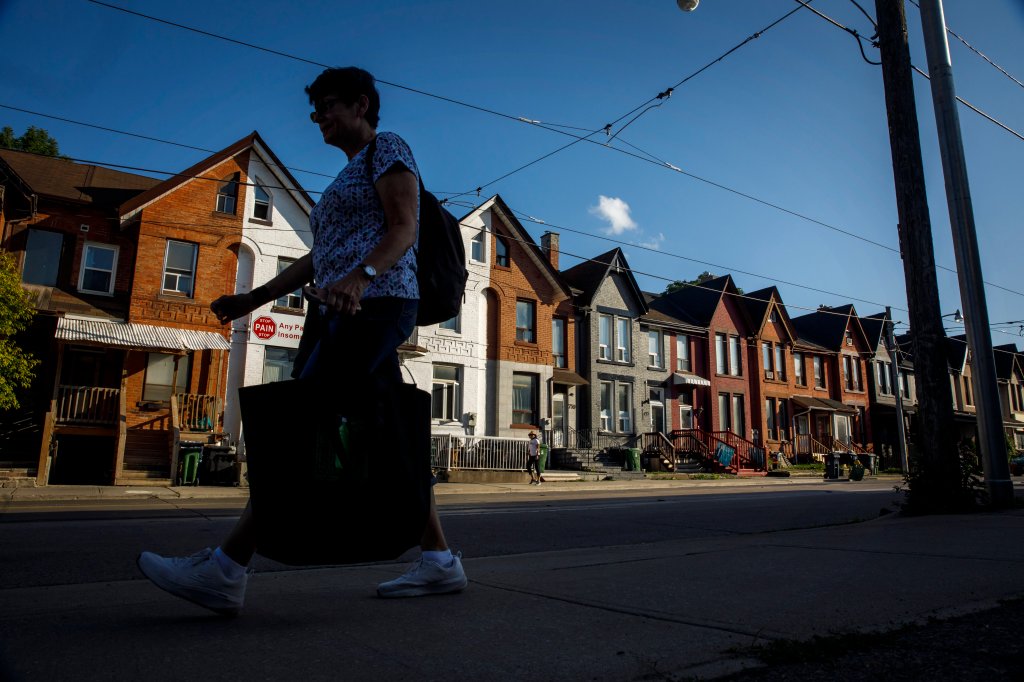
AFFORDABILITY ISSUES ARE ‘CASTING A SHADOW’ OVER YOUNG CANADIANS’ ECONOMIC FUTURES
Canadians are at risk of missing key financial milestones, particularly achieving the dream of homeownership — amid what Statistics Canada sees as a series of affordability challenges staring down the youngest generations.
“Barriers to important life cycle milestones and transitions have intensified in Canada,” the agency said in a report released Wednesday.
“Sustained food inflation, elevated housing prices, and increasingly unaffordable rental costs across much of the country are casting a shadow over the homeownership dream for many households — and, in particular, for young families.”
Young Canadian households (where the primary earner is under 35 years old) were the only cohort to see their mortgage burden decrease year-over-year in the third quarter of 2023, according to StatCan. That could be because young Canadians are paying their mortgage debt down faster, forgoing buying a home at all, or downgrading to more affordable accommodations.
The agency said that younger households are “starting to turn away from the housing market.”
StatCan pointed to rising costs for renters — many of whom are younger — amid persistent shelter inflation keeping homeownership out of reach. Renters were flagged as being more likely to face financial difficulties compared with homeowners, the agency said.
While young Canadians have seen their debt-to-income ratios improve over the past year as wages grow and the mortgage burden declines, StatCan said debt-servicing ratios for this cohort have “increased markedly” under the weight of higher interest rates.
Young households were spending 10 cents per dollar earned on debt last year, up from seven cents a dollar in 2022, StatCan said.
Renters are not the only ones facing challenges, though: the agency notes that those who do have mortgages in this age group tend to have the largest amount of debt outstanding compared with older generations.
Housing assets make up a disproportionate amount of young Canadians’ wealth, StatCan said, which makes this generation more vulnerable to fluctuations in the housing market.
More on Money
- A lawsuit wants to change the way you pay your Realtors. What to know
- Remote work and how it’s shaping where people are now buying homes in Ontario
- Canadian businesses say housing crisis is forcing them to boost pay: survey
But the role of owning a home in generating wealth historically can’t be ignored.
Those aged 35 and under saw their wealth grow at a slower rate in 2023 as their real estate holdings declined as a group, StatCan said.
Video: Reverse Boomerang: Why Boomers are being forced to move back in with their kids
Young Canadians are more likely to be homeowners if their parents were also homeowners, a previous Statistics Canada report showed.
StatCan also cited CIBC research showing the share of first-time buyers getting a financial gift to fund their purchase was rising, and the monetary value of those gifts was going up as well.
If these affordability challenges persist, StatCan warns that socio-economic mobility will be limited with young Canadians unable to achieve homeownership on their own merits, widening inequality gaps. A recent RBC report also argued that Canada's next wealth divide will be between renters and homeowners.
“The financial realities of those with limited access to parental supports may contribute to heightened inequality, particularly if important sources of wealth accumulation, such as owning a home, are delayed or become inaccessible to larger numbers of young Canadians,” the StatCan report said.
To learn more about the basics of breaking into the housing market, check out Global News' Home School series, which teaches Canadians everything they need to know about buying a home that they didn't learn in the classroom.
2024-03-27T14:39:46Z dg43tfdfdgfd